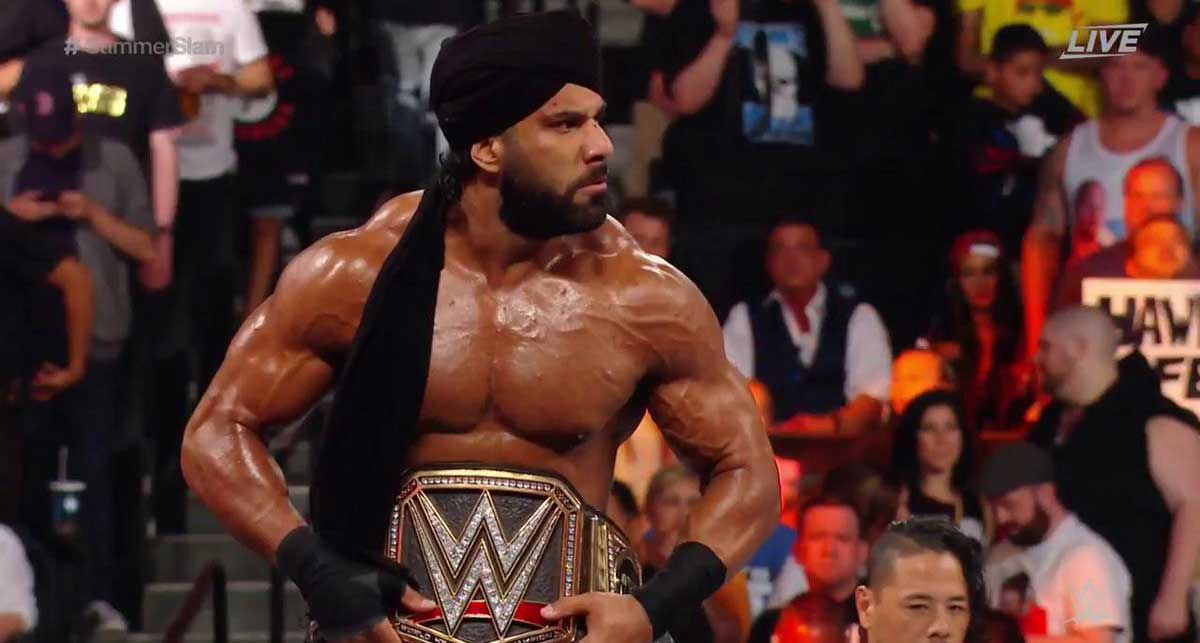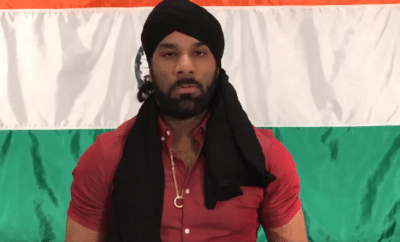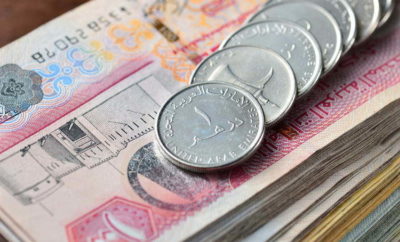NRI
How Jinder Mahal’s Success is A Winning Formula for WWE

The swift rise of Indo-Canadian wrestler Jinder Mahal will work to further boost the popularity of WWE in India
Jinder Mahal’s win at the WWE Championship on August 20, when he retained his title after defeating Shinsuke Nakamura at WWE pay-per-view SummerSlam 2017 at the Barclays Center in Brooklyn, New York, works out just fine for the World Wrestling Entertainment. The American entertainment company, which mainly deals with professional wrestling, has been eyeing the Indian market with keen eyes for a couple of years now.
And the recent victory recorded by the Indo-Canadian wrestler, who is known for flaring up the crowd’s passions with fiery rhetoric about his culture and heritage, will serve to boost its presence in the Asian country like no other.
Mahal, The Maharaja
The sharp rise of Mahal, whose real name is Yuvraj Singh Dhesi, has made scores of Indians imagine themselves closer to the international fame that WWE provides. “The modern day Maharaja”, as Mahal calls himself, is now the hero of hundreds of children in Indian households, having defeated the likes of Randy Orton and more recently, Shinsuke Nakamura. WWE’s ties with Indians were earlier limited to Dalip Singh Rana — the Great Khali — who was active until 2014.
The popularity of Mahal, the 31-year-old wrestler with Punjabi roots has, however, risen multifold in India in the last few months. Mahal celebrates his wins with Indian music, flaunts his immigrant identity and calls his finishing move, ‘khallas’. His Indian-origin allies, Gurvinder Sihra and Harvinder Sihra — known as the Singh Brothers because of their wrestling names, Sunil Singh and Samir Singh — are increasingly more visible too. In June this year, WWE also signed Kavita Dalal, it’s first female wrestler from India.
Mahal’s India Connect
The rising stardom of Mahal fits into the WWE’s scheme of entering the country’s market. Sidharth Monga writes in a feature on ESPN, “This sudden five-week rise in the fortune of Mahal is a reminder that among other things, WWE is foremost a business. India, with its big population, is a new market for this business…”
The return of Mahal in 2016, after a hiatus of over a year, brought about the much-needed thrust for the WWE’s foray into India. Recalling how he got an unexpected call from the WWE asking him if he would like to come back, NYT reports how CEO Vince McMahon wanted him to talk about his immigrant roots. Mahal, though reluctant at first, agreed. At the Wells Fargo Arena in Des Moines he came wearing a turban and said to the then-champion, Randy Orton: “Randy, you’re just like all of these people!,” the publication recounted. “You disrespect me because I look different! You disrespect me because of your arrogance and your lack of tolerance!” The crowd disapproved. But Mahal was ecstatic. “The reaction was great; I heard the crowd that day,” NYT quoted him as saying. “I was elevated to star status just within that one promo.”
There has been no stopping Mahal, and WWE’s plans for India, since then.
WWE’s India Plans
In its investor presentation in May 2017, WWE specified that “India and China represent significant opportunity” in the long-term growth for the company. It aims to host at least one event in the country this year, the New York Times reported, citing Michelle Wilson, the company’s chief revenue and marketing officer. Wilson also told the publication that about 60 million viewers from India watch WWE shows every week, and that the company also launched a new weekly Hindi television show, WWE Sunday Dhamaal.
The company began by testing waters in India in 2016, when it organised a two-day event featuring some big names in New Delhi. In March this year, it announced the launch of WWE Shop, the official online source of WWE merchandise, in India for the first time ever. The shop, offering authentic apparel and accessories, replica championship titles, toys, console games, and collectibles, went live online on April 3, the same day WWE’s biggest event of the year, WrestleMania, was broadcast in India. A month later, they announced the appointment of Sheetesh Srivastava as vice president and general manager of WWE India.
WWE in India
“India represents WWE’s single largest regional contribution to the brand’s massive social media community of 750 million followers globally,” the company said in the media statement released at the time. No wonder then that their official YouTube channel has been posting videos of their events with Hindi commentary. “When it comes to social media support, India is number one and judging by the merchandise sales and fan reactions, we can be looking at a new chapter in our relationship with India,” WWE executive vice president Ed Wells was quoted as saying by the Hindustan Times in a May 2017 report.
Social media, however, is not the platform where the action will be restricted in the future. The industry is abuzz with the plans of WWE to bring the championship to India.
“I know that WWE is working really hard to announce a date shortly,” Mahal said to India Today. “Once it’s finalised, I hope I can bring the WWE Championship to India and defend it on Indian soil.” Considering his run so far, that doesn’t seem such an unlikely prospect, after all.




You must be logged in to post a comment Login